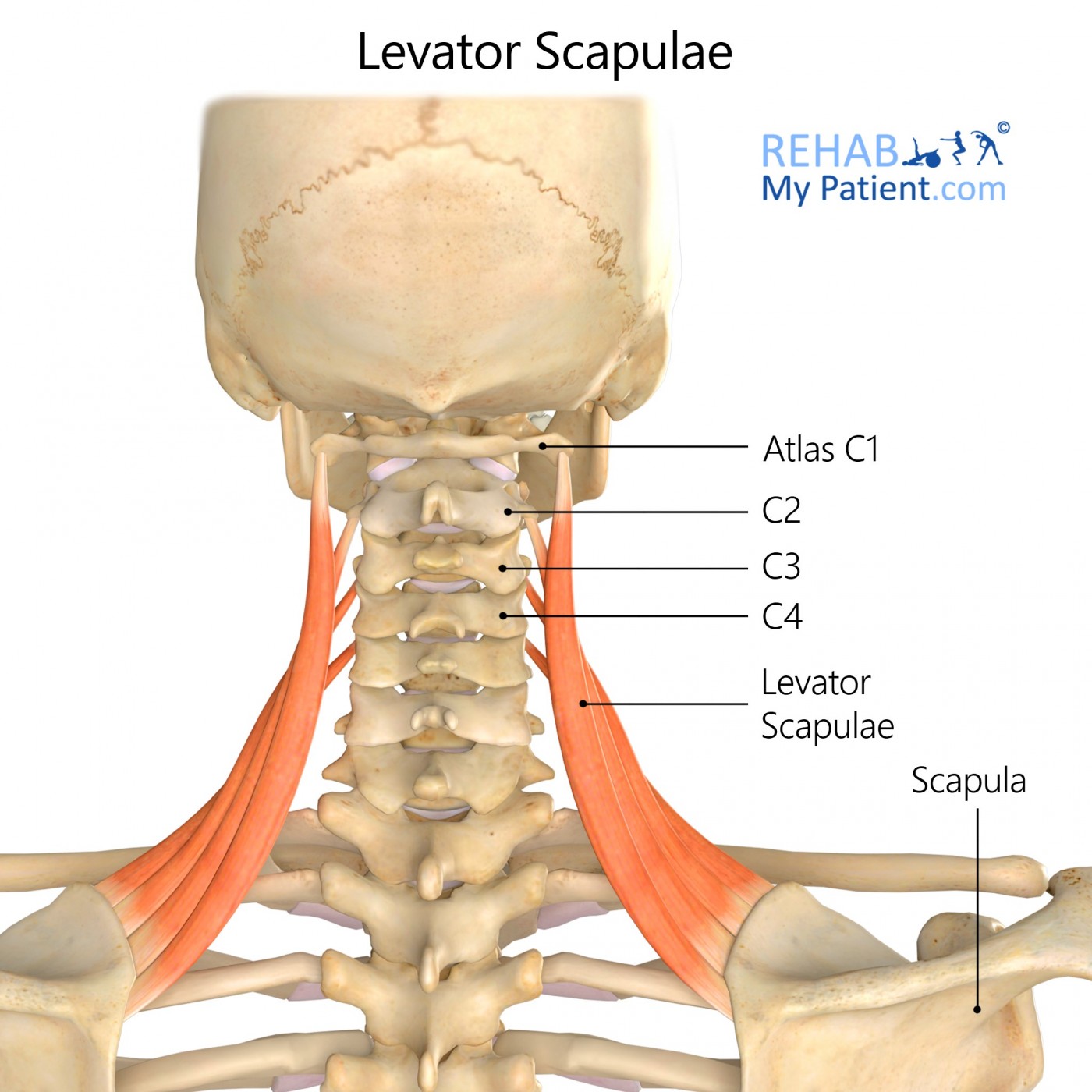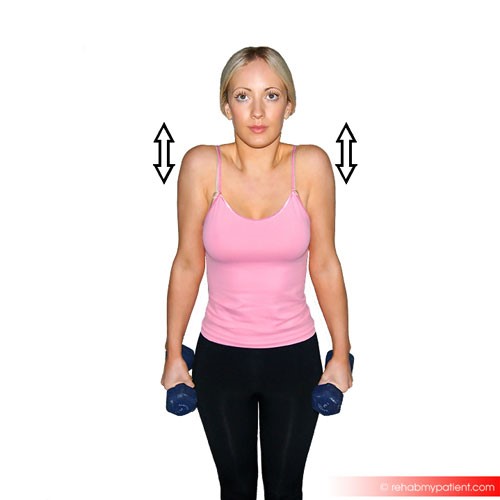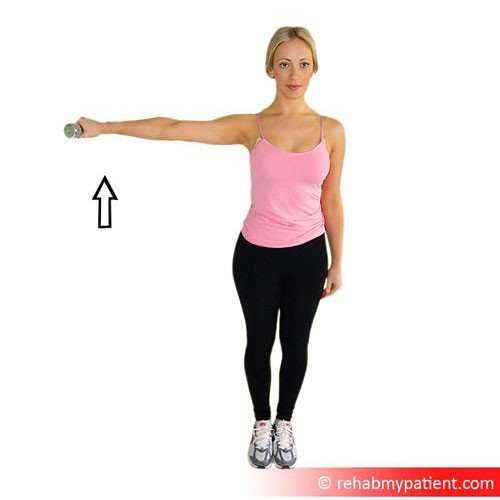
General information
Levator scapulae is a muscle of the dorsal and lateral sides of the neck.
Literal meaning
The muscle that lifts the scapula.
Interesting information
Levator scapulae is a skeletal muscle of the neck that is responsible for lifting the scapula, or shoulder blade.
Injury in the levator scapulae or the dorsal scapular nerve which innervates it often results in levator scapulae syndrome. Levator scapulae syndrome is identified by pronounced sharp pain in and around the neck. Similar symptoms may also suggest damage of the dorsal scapular nerve. A condition called dorsal scapular nerve syndrome exhibits symptoms of weakened levator scapulae muscles, normally on one side. Additional symptoms may include radiating scapula pain, shoulder weakness, and diminished shoulder functions. Both syndromes may originate from muscle overuse, failure to properly stretch before exercise, or poor posture.
Injury to the tendon connecting the levator scapulae to the bone may cause headaches, swelling of the neck area, and radiating pain through the neck, shoulder, and upper back area. With whiplash being the most common cause for levator scapulae tendinosis, treatments provide some relief. Original treatments include cortisone injections and physical therapy. Due to the nature of this injury, these treatments do not heal, but do provide pain relief. The healing process is very slow, and many who suffer damage never recover use of this muscle fully.
Origin
Transverse processes of C1-4.
Insertion
Medial border of scapula above the level of the scapula spine.
Function
Lifts the shoulder blade.
Neck, arm, and shoulder movement.
Nerve supply
Cervical nerve.
Dorsal scapular nerve.
Blood supply
Dorsal scapular artery.

Relevant research
Chronic tension type headaches (CTTH) correlate with specific trigger points (TrPs) located in the head and the neck. One of the most common TrPs found was the levator scapulae. TrPs for CTTH in the levator scapulae were located on the left side.
Fernández-de-las-Peñas, C, Ge, H, Alonso-Blanco, C, González-Iglesias, J, Arendt-Nielsen, L. (2010). “Referred pain areas of active myofascial trigger points in head, neck, and shoulder muscles, in chronic tension type headache”. Journal of Bodywork & Movement Therapies. 14, 391-396.
Post-mastectomy and post-lumpectomy pain may have origins in myofascial muscles, such as the levator scapulae. Studies in relation to TrPs and breast cancer are rare, but one report shows the myofascial interventions directed at the chest wall offered pain relief following a lumpectomy. Following breast cancer surgery, it may be recommended that muscle components be treated to relieve pain symptoms.
Fernández-Lao, C, Cantarero-Villanueva, I, Fernández-de-las-Peñas, C, Del-Moral-Avila, R, Menjón-Beltrán, S, Arroyo-Morales, M. (2012). “Development of active myofascial trigger points in neck and shoulder musculature is similar after lumpectomy or mastectomy surgery for breast cancer”. Journal of Bodywork & Movement Therapies. 16, 183-190.
Levator scapulae exercises
To strengthen levator scapulae, the following exercises may be performed.

Dumbbell Shrugs
To perform this exercise, stand with feet shoulder-width apart. Hold one dumbbell in each hand. Pull shoulders up towards the ears as if shrugging the lower your shoulders. Complete three sets of fifteen repetitions twice a week.

Lateral Raises
Stand with feet shoulder-width apart holding a dumbbell in each hand. Raise arms laterally until the elbow is at the same level as the shoulder, then lower dumbbells. Complete three sets of fifteen repetitions twice a week.
Sign Up
Sign up for your free trial now!
Get started with Rehab My Patient today and revolutionize your exercise prescription process for effective rehabilitation.
Start Your 14-Day Free Trial